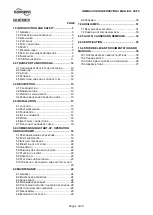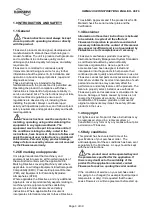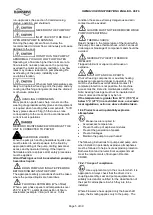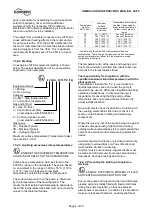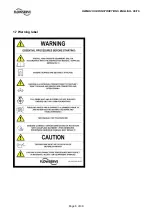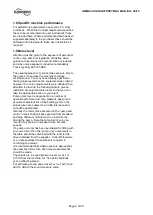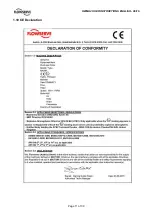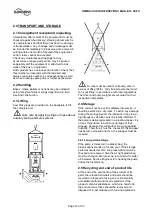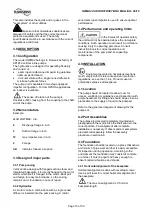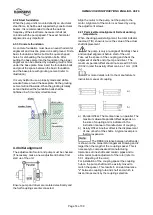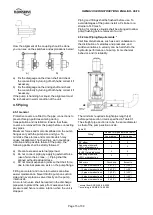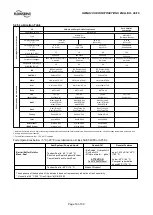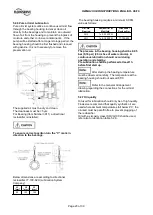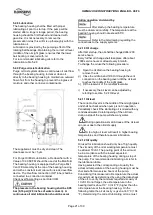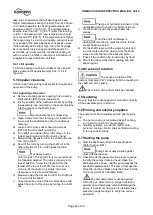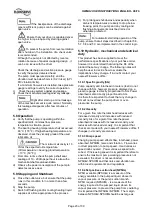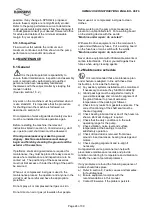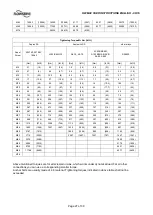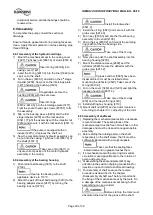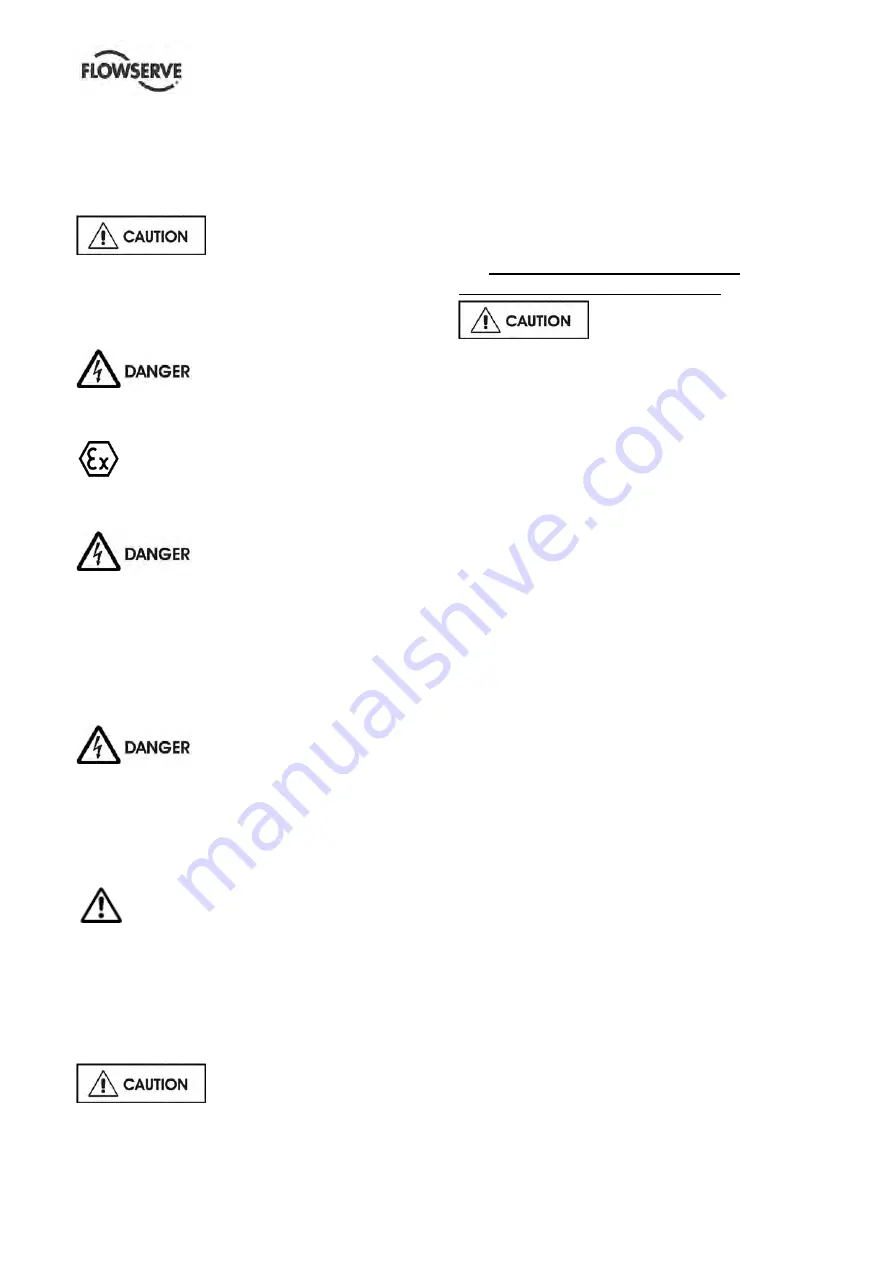
HWMA2 USER INSTRUCTIONS ENGLISH - 06/16
Page 16 of 39
4.5.3 Drain
This connection is used for total drainage of the pump
casing. A flanged drain is standard and can be
optionally equipped with various kinds of valves.
Refer to GA drawing for details of the drain
connection.
By pumping toxic or explosive
media, provide the necessary security actions, e.g.
flushing with nitrogen.
4.6 Electrical connections
Electrical connections must be made by a qualified
Electrician in accordance with the relevant local
national and international regulations.
It is important to be aware of the EUROPEAN
DIRECTIVE on hazardous areas where compliance
with IEC60079-14 is an additional requirement for
making electrical connections.
It is important to be aware of the EUROPEAN
DIRECTIVE on electromagnetic compatibility when
wiring up and installing equipment on site. Attention
must be paid to ensure that the techniques used
during wiring/installation do not increase
electromagnetic emissions or decrease the
electromagnetic immunity of the equipment, wiring or
any connected devices. If in any doubt contact
Flowserve for advice.
The motor must be wired up in accordance with the
motor manufacturer's instructions (normally supplied
within the terminal box) including any temperature,
earth leakage, current and other protective devices
as appropriate. The identification nameplate should
be checked to ensure the power supply is
appropriate.
A device to provide emergency stopping must
be fitted.
If not supplied pre-wired to the pump unit the
controller/starter electrical details will also be supplied
within the controller/starter.
For electrical details on pump sets with controllers
see the separate wiring diagram.
See section 5.5,
Direction of
rotation
before connecting the motor to the electrical
supply.
4.7 Final shaft alignment check
After connecting piping to the pump, rotate the shaft
several times by hand to ensure there is no seizure
and all parts are free.
Recheck the coupling alignment, as previously
described, to ensure no pipe strain. If pipe strain
exists, correct piping.
5.0 COMMISSIONING START-UP,
OPERATION AND SHUTDOWN
These operations must be
carried out by fully qualified personnel.
5.1 Precommissioning procedure
a) The bearing housing must be filled with the
indicated oil. Check also the oil level.
b) The pump must be completely filled with liquid to
avoid running dry and to guarantee a correct
performance of the pump.
c) During filling the pump shall reach the specified
temperature, so pumps for hot liquids (T > 100 °C
(212 °F)) shall be warmed up by preflushing.
d) Check the sense of rotation of the pump (Coupling
spacer dismantled).
Sense of rotation is clockwise viewed to the drive
end of the pump.
e) The pump rotor and the shaft seal must be in
correct axial position. Mounting plates of
mechanical seal must be locked at the seal gland
in open position. Drive-collar of the mechanical
seal sleeve must be tightened.
f) Check the readiness of all auxiliary systems (seal
sys., lubrication sys.,...) for start up.
g) All pipe work, including the internal and the
auxiliary pipe work, must be connected correctly
and must be absolutely tight. Check the tightness
of all connections of the auxiliary pipe work. The
suction valve must be open, the discharge valve
shall be closed.
h) Turn the pump by hand, if required with the help of
a lever, to check the free rotation of the rotor. The
rotor must turn uniformly and noiselessly. Some
resistance may be felt due to friction in bearings
and seals.
i) Check the readiness of the driver for start up. Refer
to the manual of the driver (preheating for
explosion proof E-motor).
5.2 Pump Lubricants
5.2.1 Lubrication
The bearing housing shall be filled with proper
lubricating oil prior to start up. If the pump will be
started after a longer storage period, the bearing
housing should be first flushed and cleaned with
gasoline. It is not necessary to remove the

